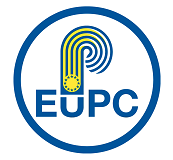2020
Can single-use plastic products help fighting with coronavirus?
Below you can find the text written by PUPC's General Director Robert Szyman, which appeared on Plastech.pl
The spectre of the global threat of the virus responsible for COVID-19 is becoming a reality. There are appeals from everywhere for the highest care of hygiene standards, not touching each other and not approaching other people if not necessary. Care for hygiene was one of the basic premises for the use of plastics to produce the disposable products, and their entry into medicine was a real revolution. In this context, it is worth to remember the positive characteristics of plastics, that the world seems to forget. In the context of a global pandemic, their single-use feature looks like a desirable feature by all means.
It is worth remembering that people can become infected (not only with coronavirus) not only through direct contact, for example by droplet, but also by using the same dishes, cups, cutlery or other reusable items. They are not always sterilized and that significantly increases the possibilty of infection.
Limiting that was a real challenge in medicine. Until the 1950s medical tools or syringes were made of glass or metal. Transmission of infectious diseases this way was very common and subsequent patients were cathing them. Then James Sorenson, Dale Ballard and Victor Cartwright came up with the revolutionary idea of using plastics in medicine. From that moment the problem was defineteley solved! Today, we often talk about disposable food packaging or cutlery, forgetting the huge role that syringes, saline and blood containers as well as endoprostheses made of plastic play in caring for our safety.
However, the use of plastics as food packaging is currently the best possible solution, but we should pay attention to the entire value chain, not just selected fragments. Trucost Agency estimates that if we wanted to replace plastics as consumer goods packaging with alternative raw materials, the environmental costs of that would be 3.8 times higher than with plastic.
According to Trucost, the environmental cost of using the plastics is estimated at USD 139 billion, while the cost of using alternative materials (taking into account the entire value chain, i.e. greenhouse gas emissions during production, higher logistics costs related to higher mass, etc.) at USD 533 billion. This needs no comment.
Undoubtedly the current challenge with plastics is a fact and no one negates or ignores it. However, the whole debate is not about materials themselves, but about managing all of them in an optimised way. There is a need for intensive development of infrastructure that will serve to increase the level of recycling and appropriate design of packaging. It is worth giving plastics a second and next life using one of their most important features - longevity. The plastics industry itself also undertakes initiatives aimed at greater care for the environment, such as the Operation Clean Sweep program, which is an effective tool for reducing the penetration of plastic microducts into the environment. Another initiative is MORE platform. Its task is to register the amount of raw material derived from recycling plastics in new, ready products.
It is good to see and promote the positive qualities of plastics, their role in caring for hygiene or reducing the risks of infections. At a time when germs spread as fast as people carrying them, and especially during the fight against coronavirus, these qualities cannot be overestimated.
Robert Szyman
The original text: https://www.plastech.pl/wiadomosci/Czy-wyroby-plastikowe-jednorazowego-uzytku-moga-pomoc-w-14906


